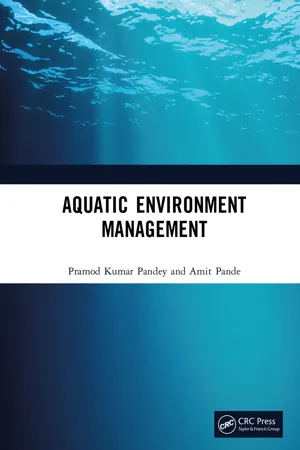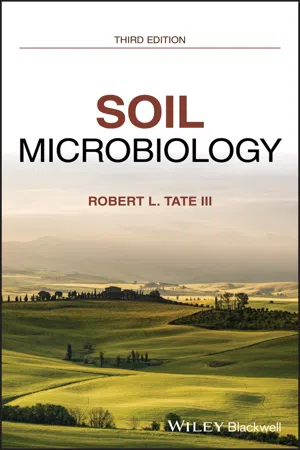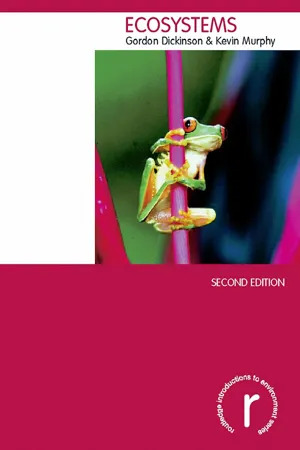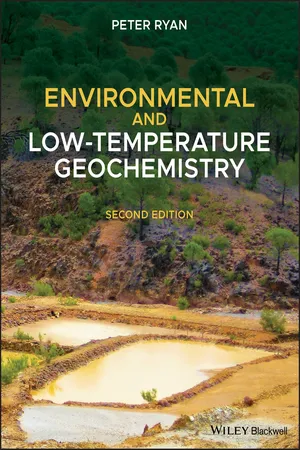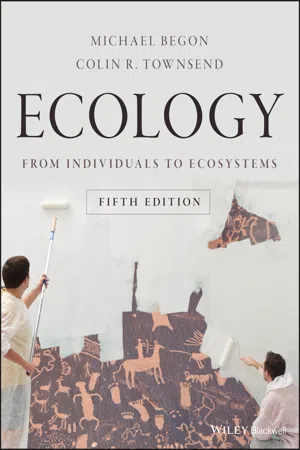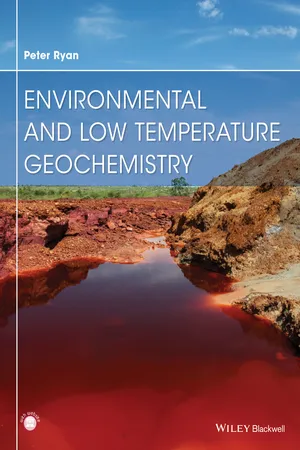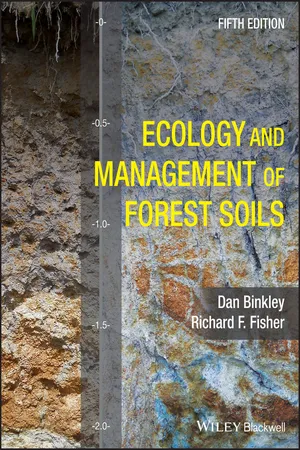Biological Sciences
Nutrient Cycles
Nutrient cycles refer to the movement and exchange of essential elements such as carbon, nitrogen, and phosphorus between the biotic and abiotic components of an ecosystem. These cycles involve processes like photosynthesis, respiration, decomposition, and nutrient uptake by plants. Nutrient cycles are crucial for sustaining life and maintaining ecological balance within ecosystems.
Written by Perlego with AI-assistance
Related key terms
9 Key excerpts on "Nutrient Cycles"
- Arun Karnwal, Abdel Rahman Mohammad Said Al-Tawaha(Authors)
- 2002(Publication Date)
- Bentham Science Publishers(Publisher)
Nutrient Cycling: An Approach for Environmental SustainabilitySufiara Yousuf1,Nafiaah Naqash1,Rahul Singh1 , *1 Department of Zoology, School of Bio-engineering and Bio-sciences, Lovely Professional Uni-versity, Phagwara-144411, Punjab, IndiaAbstract
Nutrient cycling is an important environmental process and has been the focus of ecological research. Nutrient cycling refers to the sufficient supply of key elements provided through the ecological processes within and between various biotic or abiotic components of a cell, community, or ecosystem. Nutrient cycling also includes the recovery and reuse of industrial, agricultural, and municipal organic debris that are considered wastes. Nutrient Cycles include biotic and abiotic components involved in biological, geological, and chemical processes known as biogeochemical cycles. Changes occurring in such cycles may indicate or even alter the functioning of the ecosystem. Plants take up soil nutrients in terrestrial ecosystems for healthy growth and development, wherein soil acts as a nutrient reservoir. Nutrients are lost from such sites due to soil erosion, denitrification, and food production, which cause reduced availability of nutrients. Therefore, analyzing nutrients’ assimilation, transport through biota, and their release for subsequent re-assimilation is mandatory. Nutrients to be recycled essentially for the survival of organisms include macronutrients (C, O, H, N, K, P, Ca, Mg, S, and Cl) and micronutrients (Fe, Mn, Mo, Cu, Zn, Bo, Ni, Co, Na, Se, and I). This chapter presents the role of nutrients and nutrient cycling for environmental sustainability.- eBook - ePub
- Pramod Kumar Pandey, Amit Pande(Authors)
- 2023(Publication Date)
- CRC Press(Publisher)
3 Nutrient Cycling in Aquatic EcosystemDOI: 10.1201/9781003313137-33.1 Introduction
The Earth is created with a finite number of chemical elements, and the only way more elements may be added is occasionally by meteorites striking the Earth from space. Chemicals are recycled throughout the Earth’s biological and geological cycles because they operate in a closed system and don’t dramatically increase or decrease in volume. These cycles affect the biosphere lithosphere, atmosphere, and hydrosphere, which are inert. The primary biogeochemical cycles explain how carbon, nitrogen, and phosphorus move through the environment.These substances move back and forth through the biosphere, lithosphere, hydrosphere, and atmosphere over time. Living beings can absorb and use them for reproduction and growth before passing them on to new organisms or re-entering one of the geospheres. The hydrosphere contains dissolved nutrients and gases such as PO4 3 -, NO3 , and CO2 , whereas the atmosphere contains gases such as CO2 and N2. The sedimentary and volcanic rocks include minerals such as carbonates, sulphates, or phosphates. Thus, the term biogeochemical cycles is commonly used to describe the exchange of nutrients and other elements between living organisms and non-living environments.Biogeochemical cycles may be classified as sedimentary cycles and gaseous cycles. The sedimentary cycle involves the decomposition of rocks and the erosion of minerals. In addition to their circulation in the environment, they eventually return to the Earth’s crust. The sedimentary cycles include iron, calcium, phosphorus, and other elements more closely associated with the Earth; for example, the phosphorus cycle, where the long-distance transfer mechanisms are absent. Biogeochemical cycles that involve air or the oceans are called gaseous cycles, as they are facilitated via evaporation. A gaseous cycle involves an exchange between the atmosphere and the environment. Some examples of gaseous cycles are nitrogen, oxygen, carbon, and water. Gaseous cycles tend to move faster than sedimentary cycles and respond more quickly to changes in the biosphere because the atmosphere is a vast reservoir. The nitrogen and the carbon cycles are two examples of the global Nutrient Cycles (gaseous cycles) that link the biosphere, or connected ecosystem, which includes the Earth and living beings. - eBook - ePub
- Robert L. Tate(Author)
- 2020(Publication Date)
- Wiley-Blackwell(Publisher)
The variability in the degree of complexity associated with development of biogeochemical cycles occurring in soil reflects the vast diversity of chemical and physical states of the elements (e.g. carbon, nitrogen, sulfur, phosphorus) that can be considered. Carbon is found as carbon dioxide in soil air, bicarbonate in soil water, and carbonate in soil minerals, not to mention the vast number of organic chemicals contained in living cells, soil humus, and any anthropogenic or xenobiotic compounds in the system. Added complexity is introduced when the elements of concerns exists in several oxidation states (e. g., nitrogen, sulfur as well as metal ions such as iron, and aluminum. Therefore, an evaluation of biogeochemical cycles must include consideration of the totality of biological, chemical, and physical interactions associated with the movement of nutrients between organic and inorganic pools and the variety of geochemical reservoirs existent within an ecosystem.This definition of the complete realm of biogeochemical cycles emphasizes the point that study of these chemical transformations has real implications beyond the world of plant science and general biology. Study of these cycles of life‐sustaining nutrients is also essential for such broad‐based disciplines as general ecology or environmental science. For example, consideration of biogeochemical cycles in disturbed environments is essential for optimizing anthropogenic activities for ecosystem sustenance as well as in development of management plans for restoration or reclamation of damaged systems; that is, development of appropriate ecosystem stewardship procedures.As suggested by the foregoing analysis, a study of biogeochemical cycles requires a means of assessing a wide array of complex interactions within a constantly varying environment. Some details may be studied in isolation, but it must be remembered that the primary objective of the exercise is to develop an understanding of the overall pattern of distribution and movement of nutrients in the ecosystem and their impact on ecosystem function and sustainability as well as evolution. A means of developing an overarching framework for study of biogeochemical cycles is to assemble the data into models. These models may be used to elucidate gaps in knowledge, provide hypotheses for future study, and develop experimental plans for quantifying nutrient movement within the cycles and assessment of the impact of environmental modification on these processes. Early modeling activity, or perhaps modeling activity at its simplest, involves conceptual models. The substances of interest are grouped in boxes (commonly referred to as pools) with arrows between the boxes to designate direction of nutrient flow. Some models include size and shape of the vectors of movement of the substances of interest between various chemical and physical pools existent in the site of interest. These vectors may involve processes of limited magnitude (e.g. decomposition of specific pesticides) as represented by major or minor pathways of nutrient flow (or in the example noted above, movement of the pesticide between various physical and chemical states of the chemical and the resultant changes in its impact of ecosystem function). These models provide a basis for design of experiments that yield the data necessary for development of more complex and predictive mathematical models. - eBook - ePub
- Gordon Dickinson, Kevin Murphy(Authors)
- 2007(Publication Date)
- Routledge(Publisher)
4 Material cycles in ecosystems
The materials which make up ecosystems, nutrients, are the building blocks of life. Nutrients enter ecosystems through the metabolism of autotrophic plants. These organisms have specific requirements in respect of type, amount, location and form of nutrients. The latter two requirements are related to the concept of nutrient availability. Within ecosystems, cycling of nutrients, mainly by soil organisms in terrestrial environments, is vital because nutrients are in limited supply. Nutrient Cycles function as closed systems. This chapter covers:- Nutrient availability
- Nutrient Cycles
- Soil, nutrient cycling and nutrient store
- Types of nutrient cycling systems
Materials: the building blocks of ecosystems
The way in which ecosystems use energy to power their functioning was analysed in Chapter 3 . The transmission of energy through an ecosystem is dependent on the availability of specific materials. A central feature of all material used in ecosystems is cycling. Without cycling, ecosystem functioning would rapidly come to a halt. This chapter is concerned not only with what materials are involved in ecosystem function, and their specific functional roles, but also the ways in which different ecosystem materials are constantly cycled within the biosphere. General types of cycling systems which are based on particular nutrient elements can be defined. However, the detailed pattern of nutrient use and cycling within an ecosystem depends on the specific character of that ecosystem, in particular the nature of autotrophic vegetation and primary production in that ecosystem, and the characteristics of the physical environment. In the analysis of material cycles in ecosystems the biological focus will be on two categories of organisms: autotrophs and detritivores. The former are responsible for the intake of mineral nutrients into the ecosystem, and thus are the starting point for virtually all the material flow in the living components of the ecosystem, while the latter break down organic tissue, returning partly or wholly disaggregated material to the soil in the case of terrestrial environments. The former use nutrients to construct the substance of life; the latter are a major factor in the return of living material to a simple abiotic form which may be used again by plants. The term ‘nutrient’ is used to describe the chemical elements which are used to construct living material. This needs to be explained more fully. The input of materials into the ecosystem, as with the energy input, commences with autotrophic plants. This is a logical starting point, because the input materials are in their simplest chemical combination. However, it should be remembered that material use in an ecosystem occurs in a continuous and largely closed cycling system. Not all the chemical elements which exist on Earth are involved in the construction of biological materials, or at least not in quantities which have, as yet, been detected. The majority of material, typically at least 90 per cent of total biomass - eBook - ePub
- Peter Ryan(Author)
- 2019(Publication Date)
- Wiley-Blackwell(Publisher)
6 Biogeochemical Systems and Cycles (N, P, S)Transfer of elements among various compounds and reservoirs that differ in form and scale occurs as a result of biogeochemical reactions and changes of state. Some elements have very strong affinities for certain reservoirs; for example, silicon is strongly partitioned into minerals in the crust and in sediments at the surface of the earth, whereas only small amounts of Si, mainly as windblown mineral particles, are found in the atmosphere. Conversely, nitrogen is strongly partitioned into the atmosphere and concentrations of nitrogen in the crust are very low compared to other elements, and to N abundance in air. In some cases, elemental cycling occurs primarily by inorganic processes (e.g. mineral reactions deep within sedimentary basins or hydrothermal systems), but often elemental cycling is influenced or strongly controlled by biological factors. Prominent examples of biogeochemical processes are the cycling of carbon, where photosynthesis fixes carbon into living organisms, and the cycling of nitrogen, where soil microbial activity can help to fix nitrogen from the atmosphere (as N2 ) into soils (e.g. as NH4 + and NO3 − ).6.1 Systems and Elemental Cycles
Reservoirs, fluxes, residence times, and steady state are all important concepts to understand when considering elemental cycling, so the following sections present some basic concepts and terms on these topics.6.1.1 Reservoirs, fluxes, and systems
Reservoirs range in scale depending on the scope of the question under consideration. In general, any reservoir will contain a quantifiable amount of material with definable borders defined by distinct chemical, physical, or biological characteristics. Essentially, when seeking to quantify the amount of material in various parts of the lithosphere–hydrosphere–biosphere–atmosphere system, and when trying to examine the movement of material among these systems, the constituents of Earth need to be defined as containers (reservoirs) that gain and lose material. Some reservoirs are global in scale, e.g. the atmosphere, oceans, soils, and biota. Studies of carbon cycling often examine reservoirs at this scale (e.g. “what is the flux of carbon to the atmosphere from the crustal reservoir?”). However, if the scope of a study is cycling of phosphorus in a small lake, pertinent reservoirs might include the water column (which could contain dissolved P as well as P sorbed to inorganic or organic particulate matter) and lake sediments (which would likely include P in minerals and P in organic matter). Scale can go all the way down to reservoirs on the molecular scale, e.g. “is the selenium in this soil partitioned into mineral exchange sites, the aqueous solution, or organic matter?” – each of these would comprise a microscale reservoir in that soil system. - eBook - ePub
Ecology
From Individuals to Ecosystems
- Michael Begon, Colin R. Townsend(Authors)
- 2020(Publication Date)
- Wiley(Publisher)
Figure 21.1 .The relationship between energy flow and nutrient flux. Nutrients locked in organic matter (dark arrows) are distinguished from the free inorganic state (white arrows). Energy flow is depicted by pale arrows. Energy cannot be recycled but nutrients can. However, nutrient cycling is never perfect – some of the inorganic nutrient budget is exported from the ecosystem while further supplies may be imported from outside. DOM, dead organic matter; NPP, net primary production.Figure 21.1By its very nature, then, each joule of energy can be used only once, whereas chemical nutrients, the building blocks of biomass, simply change the form of molecule of which they are part (e.g. nitrate‐N to protein‐N to nitrate‐N). They can be used again, and repeatedly recycled. Unlike the energy of solar radiation, nutrients are not in unalterable supply, and the process of locking some up into living biomass reduces the supply remaining to the rest of the community. If plants, and their consumers, were not eventually decomposed, the supply of nutrients would become exhausted and life on the planet would cease. The activity of heterotrophic organisms is crucial in bringing about nutrient cycling and maintaining productivity. The decomposer system plays an overwhelming role in the release of nutrients in their simple inorganic form, but some is also released from the grazer system (carbon in CO2 respired by herbivores, carnivores and parasites).… but nutrient cycling is never perfectNot all nutrients released during decomposition are necessarily taken up again by plants. Nutrient recycling is never perfect and some nutrients are exported from land by runoff into streams (ultimately to lakes and oceans) and others, such as nitrogen and sulphur, that have gaseous phases, can be lost to the atmosphere. Moreover, a community receives additional supplies of nutrients that do not depend directly on inputs from recently decomposed matter – minerals dissolved in rain, for example, or derived from weathered rock. - eBook - ePub
- Peter Ryan(Author)
- 2014(Publication Date)
- Wiley-Blackwell(Publisher)
6 Biogeochemical Cycles – N, P, S Chemical reactions cause elements to be transferred among various compounds and reservoirs that vary in form and scale. Some elements have very strong affinities for certain reservoirs; for example, silicon is strongly partitioned into minerals in the crust and in sediments at the surface of the Earth, whereas only small amounts of Si, mainly as wind-blown mineral particles, are found in the atmosphere. Conversely, nitrogen is strongly partitioned into the atmosphere and concentrations of nitrogen in the crust are very low. In some cases, elemental cycling occurs primarily by inorganic processes (e.g. mineral reactions deep within sedimentary basins or hydrothermal systems), but often elemental cycling is influenced or strongly controlled by biological processes. Prominent examples of biogeochemical processes are the cycling of carbon, where photosynthesis fixes carbon into living organisms, and the cycling of nitrogen, where soil microbial activity can help to fix nitrogen from the atmosphere (as N 2) into soils (e.g. as and). Systems and elemental cycles Important terms related to elemental cycling include reservoirs, fluxes, residence times and steady state. Geochemists consider the Earth a closed system with respect to elemental cycling – effectively all elements are recycled within reservoirs from the atmosphere to down into the solid Earth. Clearly this ignores addition of matter by extraterrestrial impacts (proportionally very small inputs) and negligible losses from the top of the atmosphere to space, but the consideration of Earth as a closed system is the common approach because these minor fluxes are negligible at the scale of the whole Earth. Reservoirs range in scale depending on the scope of the problem being studied. In general, any reservoir will contain a quantifiable amount of material with definable borders defined by distinct chemical, physical, or biological characteristics - J. J. Landsberg, S. T. Gower(Authors)
- 1997(Publication Date)
- Academic Press(Publisher)
Therefore, if forest ecosystems are to be managed on a sustainable basis, it is essential to understand (i) the natural processes regulating nutrient inputs, (ii) the transformations both within and between the soil and vegetation, and (iii) nutrient losses (Fig. 7.1). We also have to understand how these processes are affected by natural and anthropogenic disturbances. Figure 7.1 Schematic diagram showing the various components of the nutrient cycle of forests. The purpose of this chapter is to review the basic framework of forest nutrition, including the major sources of nutrient inputs to forests, the transfer of nutrients between the vegetation and soil, the internal recycling or redistribution and use of mobile nutrients (including the feedback mechanisms between the vegetation and soil), and the potential pathways for nutrient losses from forest ecosystems. The first part presents some basic concepts and principles; the remainder of the chapter draws on those concepts and principles to examine how various forest management practices and natural “disturbances” affect the biogeochemical cycles of forest ecosystems. Where possible, we compare contrasting forests ecosystems around the world. We have attempted to provide a balanced presentation, but the focus tends to be on nitrogen and, to a lesser extent, phosporus because these two nutrients have traditionally been perceived as the ones most commonly limiting forest growth, although this viewpoint is changing (Gosz, 1986). I The Essential Plant Nutrients and Ion- Exchange Capacity of Soils A Essential Plant Nutrients The mineral elements essential for plant growth can be divided into two categories based on the amounts required by plants (Salisbury and Ross, 1992): macro (carbon, hydrogen, oxygen, nitrogen, phosphorus, sulfur, calcium, magnesium, and potassium) and micronutrients (boron, chlorine, copper, iron, manganese, molybdenum, cobalt, and zinc)- eBook - ePub
- Dan Binkley, Richard F. Fisher(Authors)
- 2019(Publication Date)
- Wiley-Blackwell(Publisher)
+ picture.THE N CYCLE DOMINATES FOREST NUTRITION
Nitrogen cycling has received more attention in forest research than any other nutrient. Nitrogen availability limits growth in more forests in more regions than any other nutrient, and it can be important even when it is not limiting because substantial leaching of nitrate‐N can occur when N availability exceeds plant uptake. Nitrate leaching is undesirable because N is lost from the site, potentially increasing productivity of aquatic systems. Nitrate anions are also accompanied by cation nutrients, such as K+ and Ca2+ , and by potentially toxic cations such as AI3+ . This sequence also generates H+ and may acidify the soil. At high concentrations, nitrate may be toxic in drinking water.Nitrogen is a component of amino acids, enzymes, proteins, and nucleic acids. In foliage, most of the N is present in the carboxylating enzyme RUBISCO (the most abundant protein on Earth; Raven 2013 ). Higher N in leaves leads to higher RUBISCO concentrations and higher rates of photosynthesis (depending on light and water supplies, of course).The soil N cycle begins when N is added to the soil. The initial additions of N to the cycle come from atmospheric deposition, biological N fixation, and from the release of N bound in weathering rocks. Atmospheric deposition commonly adds 1–5 kg N ha−1 year−1 to forests, though rates can be higher in very polluted areas. Biological N fixation generally adds less than 1 kg N ha−1 year−1 , unless symbiotic N‐fixing plants are present to boost rates to 10–100 kg N ha−1 year−1 . The N content of rocks is quite low, ranging from about 100 mg N kg−1 of igneous rocks to more than 1,000 mg kg−1 (0.1%!) for some sedimentary rocks (Holloway and Dahlgren 2002 ). The quantitative importance of rock weathering as a source of N in forests remains largely uninvestigated, but Morford et al. (2016 ) estimated that forests on three rock types in California have weathering releases of N of 1–10 kg N ha−1 year−1
Learn about this page
Index pages curate the most relevant extracts from our library of academic textbooks. They’ve been created using an in-house natural language model (NLM), each adding context and meaning to key research topics.

